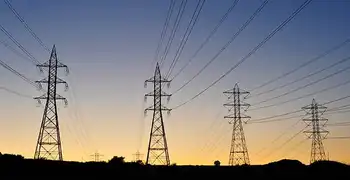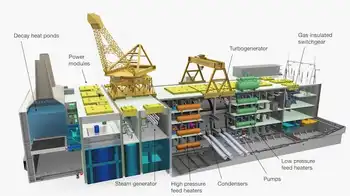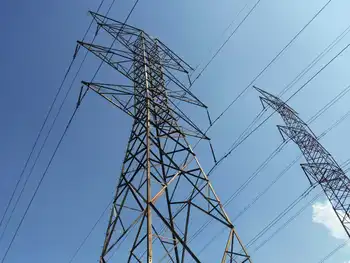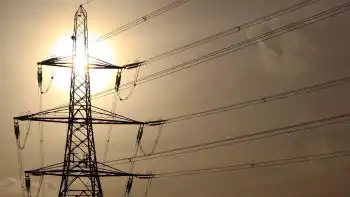Nuclear leak worse than initially thought
By Associated Press
Electrical Testing & Commissioning of Power Systems
Our customized live online or in‑person group training can be delivered to your staff at your location.

- Live Online
- 12 hours Instructor-led
- Group Training Available
Tokyo Electric Power Co. also said about 400 barrels containing low-level radioactive waste were knocked over as a result of the recent quake, revising an earlier figure of 100.
The operator announced that a leak of radioactive water into the Sea of Japan was actually 50 percent bigger than initially announced after the deadly 6.8-magnitude quake.
"We made a mistake in calculating the amount that leaked into the ocean. We apologize and make correction," the statement said. Spokesman Jun Oshima said the amount was still "one-billionth of Japan's legal limit.''
Another spokesman, Tsutomu Uehara, told reporters in Tokyo that inspections at the Kashiwazaki-Kariwa plant showed 400 drums had fallen over and that lids had come off 40 of them. No radiation has been detected outside the facility, Uehara said.
A tour later given to Japan's Communist Party chief, Kazuo Shii, and a handful of reporters revealed widespread damage across its sprawling compound, including large cracks in roads, toppled concrete fences and buckled sidewalks.
Repair workers climbed over a three-story transformer building, which was charred from top to bottom in a fire that burned for two hours.
"This is unforgivable," Shii told TEPCO Deputy Superintendent Masakazu Minamidate. "You say there's no leak before you really know.... The delay in information was especially inexcusable.''
TEPCO President Tsunehisa Katsumata toured the site earlier in the day, declaring it "a mess" and apologizing for "all the worry and trouble we have caused.''
"It is hard to make everything go perfectly," he said. "We will conduct an investigation from the ground up. But I think fundamentally we have confirmed that our safety measures worked.''
The International Atomic Energy Agency, meanwhile, pressed Japan to undertake a transparent and thorough investigation of the accidents to see if there are lessons that can be applied to nuclear plants elsewhere in the world.
Adding to the urgency was new data from aftershocks of the quake, suggesting a fault line may run underneath the mammoth power plant.
Kashiwazaki-Kariwa is the world's largest nuclear plant in power output capacity. Signs of problems after the quake came first not from the officials, but in a plume of smoke that rose up when the quake triggered a small fire at an electrical transformer.
It was announced only 12 hours later that the quake also caused a leak of about 315 gallons of water containing radioactive material. Officials said the water leak was well within safety standards. The water was flushed into the sea.
It said 50 cases of "malfunctioning and trouble" had been found. Four of the plant's seven reactors were running at the time of the quake, and they were all shut down automatically by a safety mechanism.
Hiroshi Aida, mayor of Kashiwazaki, a city near the epicenter that is home to the plant and 93,500 people, ordered operations at the plant halted for "safety reasons.''
Speaking in Malaysia, IAEA chief Mohamed ElBaradei said a thorough review was key and offered to have his Vienna-based agency pull together global experts.
"It doesn't mean that the reactor structure or system has been damaged," ElBaradei said. "I would hope and I trust that Japan would be fully transparent in its investigation of that accident. The agency would be ready to join Japan through an international team in reviewing that accident and drawing the necessary lessons.''
Meanwhile, TEPCO spokesman Hiroshi Itagaki said that information accumulated by studying aftershocks shows that a fault line stretches under the ocean near the coast, which is not far away from the plant. He declined to say how close to the plant the fault might come, but the company is planning to further study the issue.
Osamu Kamigaichi, an official at Japan's Meteorological Agency, which monitors earthquakes, said it was possible the fault line stretched in the direction of the nuclear facility and may reach underneath its grounds.
Across town, more than 8,000 residents hunkered down for their second night in shelters. The death toll – nine, with one person missing – was not expected to rise significantly. Most of the newer parts of town escaped major damage.
For residents, thousands of whom work at the plant, the controversy over its safety compounded already severe problems, which included heavy rains and the threat of landslides, water and power outages, and spotty communications.
"Whenever there is an earthquake, the first thing we worry about is the nuclear plant. I worry about whether there will be a fire or something," said Kiyokazu Tsunajima, a tailor who sat outside on his porch with his family, afraid an aftershock might collapse his damaged house.
The area around Kashiwazaki was hit by an earthquake three years ago that killed 67 people, but the plant suffered no damage.
The malfunctions and a delay in reporting them fueled concerns about the safety of Japan's 55 nuclear reactors, which have suffered a string of accidents and cover-ups. Nuclear power plants around Japan were ordered to conduct inspections.
The Kashiwazaki-Kariwa plant, located 135 miles northwest of Tokyo, has been plagued with mishaps. In 2001, a radioactive leak was found in the turbine room of one reactor.
The plant's safety record and its proximity to a fault line prompted residents to file lawsuits claiming the government had failed to conduct sufficient safety reviews when it approved construction of the plant in the 1970s. But in 2005, a Tokyo court threw out a lawsuit filed by 33 residents, saying there was no error in the government safety reviews.
The U.S. Nuclear Regulatory Commission requires that nuclear plants be built with the capacity to withstand the strongest earthquake to hit its site within 100 years. In a "safe shutdown earthquake," the chain reaction in the reactor stops, but the cooling system keeps running so excess heat is carried away from the core.
William Miller, a professor of nuclear engineering at the University of Missouri, said the Kashiwazaki-Kariwa plant "did what it was supposed to. It shut down.''
Although its operator said there were leaks, Miller called the amounts he had heard were "so small as to be negligible.''
However, David Lochbaum, director of the Nuclear Safety Project at the Union of Concerned Scientists, noted that fire and loss of power, both of which occurred at Kashiwazaki-Kariwa, are the two most likely causes of meltdowns at nuclear facilities.











